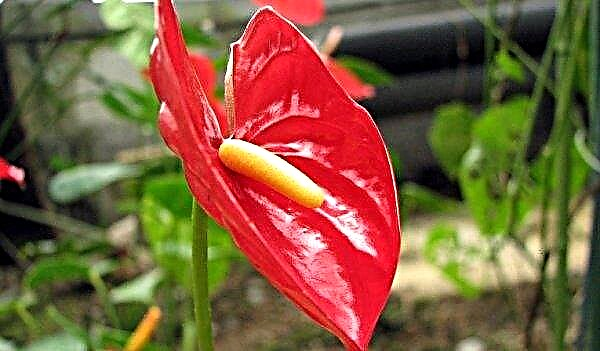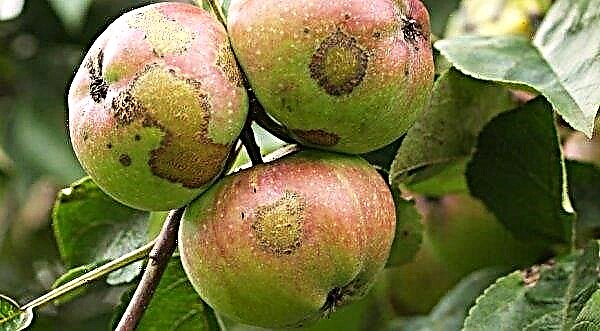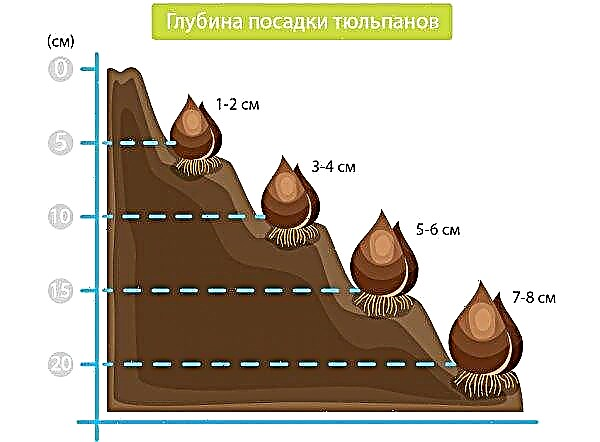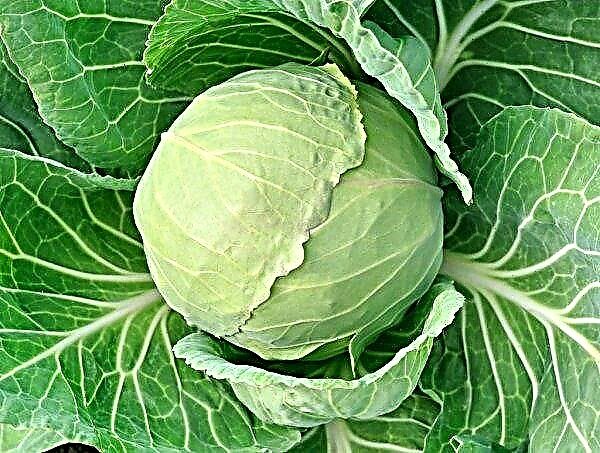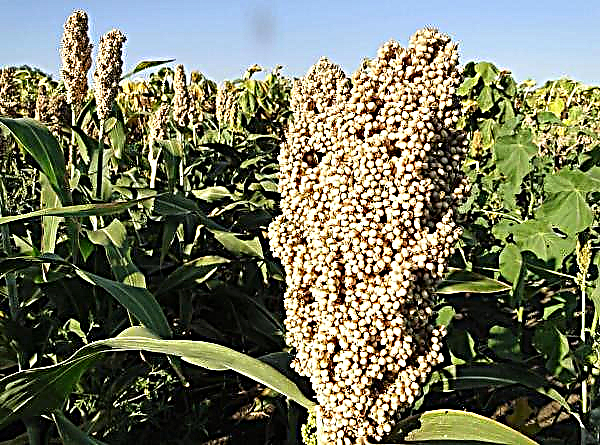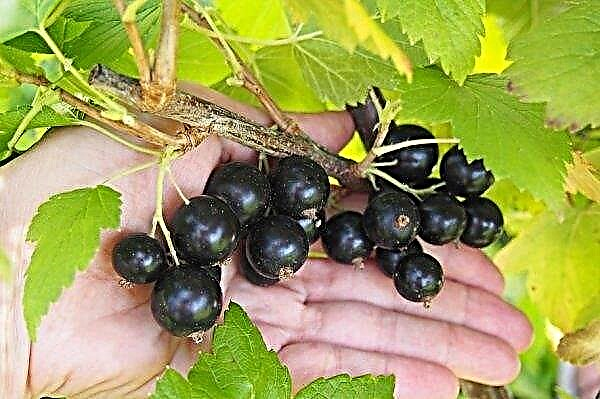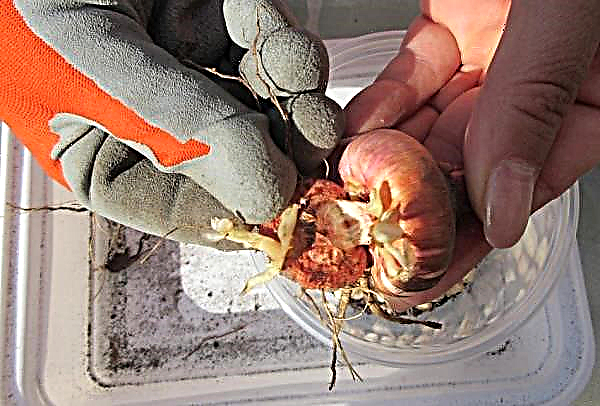Greenhouses made of polycarbonate with a wooden base are convenient both for their technical characteristics and financial advantages. In addition, working with a tree is easier. But without knowledge of the basic principles of installing the structure on the beam, the result of the work can be reduced to zero. Consider all the nuances of this process.
Preparatory stage
A solid base is needed for the finished polycarbonate greenhouse. Experienced gardeners often use a beam frame. With the right choice of material, the design will perfectly fulfill its task of creating the desired microclimate, you just have to follow the full installation technology.
Did you know? Larch wood does not rot. St. Petersburg was built specifically on piles of larch. It was also used in the construction of Odessa and Tsaritsyno.
The right choice and calculation of wood material
To install the greenhouse, a beam of coniferous (larch, pine or spruce) and hardwood are used.

Natural wood has several advantages and disadvantages that should be studied before the construction of the frame:
- Pine. Materials from pine are durable and resistant to the negative effects of external factors. It is quite light and less prone to rot. With proper processing, this type of wood will last quite a long time. Although the pine beam does not belong to cheap materials, it is widespread.
- Larch. Such a beam is resistant to moisture (with respect to pine, larch is less prone to decay). It is quite durable and, thanks to the high resin content in the tree, resists well the influence of water. Another advantage of larch is that it hardens with time and almost does not need additional processing. It is permissible to process only part of the timber that is in contact with the ground.
- Oak. This type of wood is durable and expensive material. An oak board is rarely used for the construction of such structures. But if possible, it is quite possible to install a beautiful and strong oak greenhouse.
- Spruce. A beam of it is available in price and is of high quality. But the spruce beam must be impregnated with special means because of the low resistance to decay.
Important! Using substandard materials for construction in the form of old window frames or unedged boards, it will be very difficult to achieve the durability of the structure. The service life of the greenhouse itself will be minimized, but the construction will be more economical.
- Whatever material you choose, in any case, it must meet the general requirements:
- lack of signs of decay or deformation, as well as cracks;
- element sizes appropriate to the greenhouse;
- smooth timber surface, lack of knots;
- moderate humidity of the building material.
A polycarbonate greenhouse should have a strong frame, and the beam should have a cross section of at least 50 × 50 mm. This is the optimal size for small and medium greenhouse constructions. Large greenhouses are more efficiently installed on wood with a size of 150 × 50 or 100 × 50 mm. Structures of larger dimensions are made of timber 150 × 150 or 100 × 100 mm in size. Thanks to these parameters, the base of the greenhouse will become more stable and reliable.

Site preparation for the future greenhouse
The best solution would be to install a greenhouse on a flat and open area, where garden trees or summer cottages do not restrict access to light. Often gardeners are inclined to install a wall-mounted greenhouse - this saves both space and the cost of additional lighting. This structure is installed as close to the wall of the house on the south side.
The area of the site must be selected based on the planned harvest, the amount of cash and the site itself. The standard size is 3 × 6 m. Such a greenhouse is quite compact and allows you to grow crops for a family of 6 people. There are no specific rules for the shape of the greenhouse itself. Whether it is in the form of a pyramid, an arch or a house, the main thing is that the flow of light is continuous.
Preparation and calculation of other materials
It is better to prepare the materials for the installation of a polycarbonate greenhouse in advance, despite the fact that the installation has almost no difficulties.

After choosing wood, you should get these tools:
- measuring tape or level;
- hammer, screwdriver;
- hacksaw, ax or electric saw;
- screwdriver or drill;
- galvanized or oxidized wood screws;
- anchor bolts;
- shovel, thermal washers and the beam itself.
The amount of additional materials depends on the size of the greenhouse, because for some plants the minimum dimensions are enough, and for others, for example, tomatoes or cucumbers, a height of about 3 m is necessary. It is important to think about the convenience of maintaining the greenhouse. When its length exceeds 6 m, there is a risk of the appearance of a fungus or other destructive microorganisms due to poor ventilation.
Wood treatment with antiseptic
Material from any type of wood is important to treat with a special antiseptic.

Instructions for choosing the right product are as follows:
- It is necessary to pay attention to whether the composition of the antiseptic is suitable for processing timber from the outside of the cascade. Otherwise, the coating will be washed off after the first rainfall.
- Find out how the product acts on wood material. It is important that the composition does not destroy the beam.
- Check the absence of poison in the composition. There are tools that, dissolving, penetrate the soil and destroy plants.
In addition to ready-made antiseptics, for impregnation, you can use no less effective and affordable folk remedies:
- machine oil;
- hot bitumen mixed with chilled oil, in a ratio of 1: 1;
- processing of coniferous timber with a blowtorch.
Important! A qualitative result depends not only on the characteristics of the selected antiseptic. When applying, it is worth ensuring the dryness and purity of the wood. An iron scraper or solvent will help to do this.
An antiseptic is applied with a brush to each beam and left to dry in the open. It is important that the sun does not fall on the tree. Material is checked for readiness after 3 weeks. When protecting building material with hot bitumen, it is burned with the flame of a gas burner. First you need to apply the heated bitumen to each beam and carefully grease all the places where there were knots.

Assembly of a wooden structure
Assembly of the structure is best to begin immediately on the prepared site.
For this design, several types of base are suitable:
- wooden;
- tape;
- pile;
- on foam concrete blocks.
You can familiarize yourself with the installation of the foundation in more detail in this video:
Video: installation of the foundation for a bar greenhouse
When the foundation is prepared, you need to start collecting the spans of the greenhouse. For this, the timber and the board are mounted using self-tapping screws. After that, both sides of the span are raised and pulled together by bolts.
Next, the installation of the ends. From the beam, racks for the doorway are installed and ventilation ducts are installed for air circulation in the structure. It is necessary to check the ridge corners of the frame. The angle of each frame in the rafter joint must be smooth and accurate.
Important! During installation, it is necessary to use nails and self-tapping screws of small diameter, but you do not need to twist them to the end. Leave a small gap so that the material can expand unhindered during a temperature change.
The remaining frames are connected in place, and the connection of the remaining parts of the structure is carried out using two ridge boards. Next, the resulting facade is covered with polycarbonate sheets. Interestingly, a greenhouse with such a coating will be able to withstand even significant snow loads due to the solid frame.
Do-it-yourself video assembly will demonstrate the assembly of such a frame:
Video: How to make a base of timber for a 3x4 greenhouse
Methods of attaching a greenhouse to a wooden base
Fastening a greenhouse made of polycarbonate is quite simple to do with your own hands.
In order for the design to be strong and durable, it is necessary not only to acquire the necessary materials or tools, but also to correctly perform the following steps of fixing the frame:
- First of all, you need to trim the sheets and fit them to the desired size. The cut line is best carried out in places where stiffeners are located.
- The first sheet is installed so that it extends beyond the edges of the frame by 0.5 cm. Before installation, the polycarbonate sheets should be closed with sealing tape.
- Then, holes are drilled in increments of 30–40 cm at the points of attachment of sheets of material to the tree.
- After installation in accordance with the project, polycarbonate is fixed with self-tapping screws with a rubber seal.
- The following sheets need to be fixed one to another using a connecting strip, which is installed along the support elements of the wooden frame.
- For processing corners, it is worth using corner profiles, which are specifically designed for this and are made of polycarbonate.
The completed design can last 15–20 years if all the work is done correctly. Installing a greenhouse on a timber is one of the budget and reliable options. The main thing: to choose a quality beam, because the duration of the operation of the greenhouse will depend on this. Do not be afraid of the volume of work, because with a great desire, this design can easily be done with your own hands and enjoy a fresh crop for more than one year.

